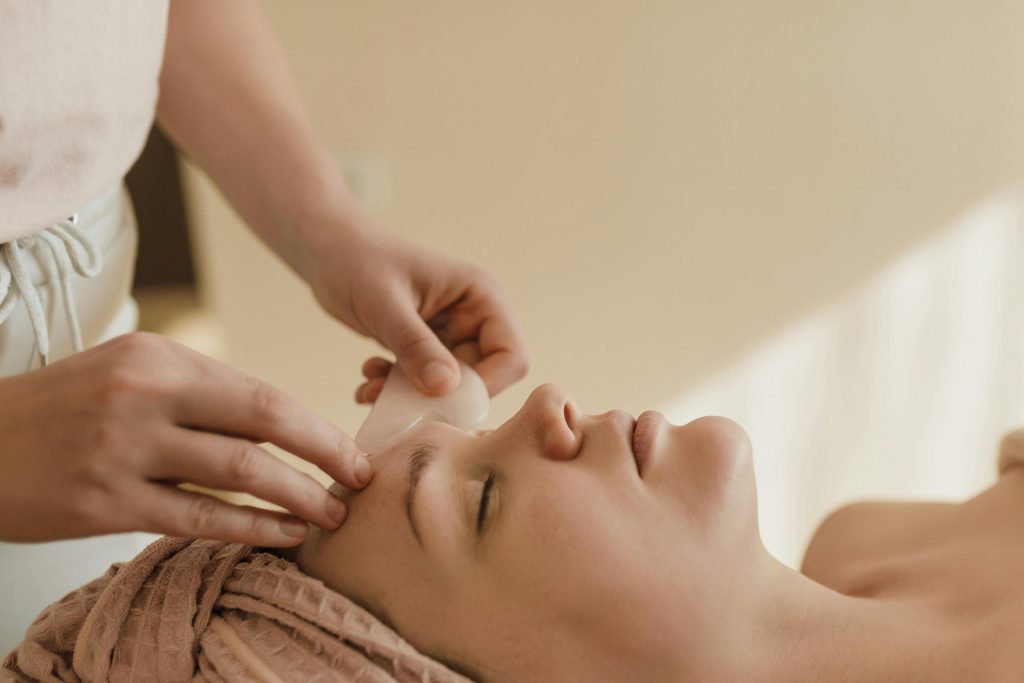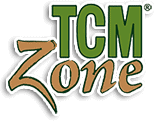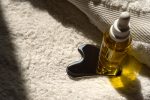Advanced Gua Sha Techniques: Applications and Innovations for Chronic Conditions

By: Alex Qui
Gua Sha is an ancient Chinese medical treatment, and when applied with precision, it can be an exceptionally effective tool for managing chronic conditions. Advanced practitioners already familiar with the basics can benefit from exploring the subtleties of tool selection, scraping patterns, and directionality to optimize therapeutic outcomes.
Tool Selection and Customization
The choice of tools in advanced Gua Sha practices is critical for achieving specific therapeutic goals. Each tool material offers distinct benefits and is selected based on the patient’s condition and the desired treatment effect.
- Horn Tools
Horn tools, often made from buffalo horn, are known for their ability to promote circulation and detoxification. They are typically used in cases of stagnation and cold conditions where there is a need to invigorate blood flow and disperse blockages.- Curved Edges: Perfect for following the body’s natural contours, making them useful for treating areas like the neck and shoulders.
- Ridged Edges: Provide a more intense scraping effect, suitable for breaking up deeper adhesions in chronic musculoskeletal pain.
- Stainless Steel Tools
Stainless steel tools offer durability and a range of edge types for different therapeutic needs. They are highly effective in treating conditions that require a more robust approach due to their weight and precision edges.- Rounded Edges: Used for general treatment areas and where a moderate amount of pressure is needed.
- Sharp, Fine Edges: Ideal for intricate areas and detailed work, such as around joints or where specific points need to be targeted.
Jade Tools
Jade is traditionally favored for its cooling properties and smooth texture. It is particularly beneficial for treating inflammatory conditions where heat is a predominant symptom. The cooling nature of jade can help to reduce local inflammation and soothe irritated tissues. Jade tools can vary in thickness and edge shape, allowing for customization:- Thin, Flat Tools: Ideal for facial treatments and delicate areas where gentle pressure is needed.
- Thick, Beveled Tools: Used for deeper tissue work on larger muscle groups, such as the back or thighs.
Advanced Scraping Patterns and Directionality
The direction and pattern of scraping in Gua Sha are not arbitrary; they follow the body’s meridian lines and lymphatic flow, significantly impacting the treatment’s efficacy.
- Meridian-Based Scraping
Advanced practitioners align their scraping techniques with the body’s meridians to maximize the flow of qi and blood. For instance:- Bladder Meridian: Scraping along the Bladder meridian on the back, from the shoulders down to the lower back, can help alleviate chronic back pain by promoting qi flow along the spine and releasing tension in the paraspinal muscles.
- Gallbladder Meridian: Targeting the Gallbladder meridian along the sides of the head and neck can reduce migraines and chronic headaches by improving circulation and relieving muscular tension.
- Lymphatic Drainage Patterns
To enhance detoxification and reduce swelling, practitioners scrape in patterns that follow the natural flow of lymphatic drainage. This often involves starting from the central areas of the body and moving outward:- Neck and Shoulders: Scrape from the center of the neck outward towards the shoulders, promoting lymphatic flow and reducing congestion.
- Abdomen: For digestive issues, scrape in a clockwise direction around the navel, following the natural direction of intestinal peristalsis.
- Circular and Zigzag Patterns
Depending on the condition being treated, practitioners may employ circular or zigzag scraping patterns:- Circular Patterns: Used to address localized pain and muscle knots, these patterns can help to break up stagnation and improve blood flow in a specific area.
- Zigzag Patterns: Effective for broader areas of muscular tension and chronic pain, these patterns can help to release fascia and deep-seated adhesions.
Applications for Chronic Conditions
Chronic Musculoskeletal Pain
For conditions like fibromyalgia or osteoarthritis, advanced Gua Sha techniques can provide significant relief. Utilizing stainless steel tools with a beveled edge, practitioners can apply deeper pressure to release muscle adhesions and improve blood flow. Scraping along the Bladder and Gallbladder meridians, in particular, helps to alleviate widespread pain and tension.- Case Study: In a study by Lauche et al. (2012), patients with chronic neck pain experienced a significant reduction in pain and improved mobility after receiving Gua Sha treatments that targeted specific meridians and used advanced tool techniques.
- Respiratory Disorders
Advanced Gua Sha can be highly effective for chronic respiratory conditions such as asthma and COPD. Using horn tools with curved edges, practitioners scrape along the Lung meridian to enhance lung function and reduce symptoms like wheezing.- Case Study: Research by Chan et al. (2011) demonstrated the effectiveness of Gua Sha in reducing respiratory distress in patients with COPD, highlighting the importance of targeted meridian work and appropriate tool selection.
- Digestive Disorders
Chronic digestive issues, such as IBS and chronic constipation, benefit from advanced Gua Sha techniques that stimulate peristalsis and balance the digestive system. Jade tools are often used due to their gentle yet effective properties, with circular scraping patterns applied to the abdomen.- Case Study: Teut et al. (2012) found that Gua Sha treatments improved symptoms in patients with chronic digestive disorders, underscoring the role of technique variation and pattern application.
- Migraines and Chronic Headaches
Using stainless steel tools with sharp edges, practitioners can effectively treat migraines and chronic headaches by scraping along the Gallbladder meridian. This method improves blood flow and relieves muscular tension around the head and neck.- Case Study: Lin et al. (2013) reported significant reductions in headache frequency and intensity in patients treated with Gua Sha, emphasizing the importance of precise tool use and meridian alignment.
- Chronic Fatigue Syndrome
Advanced Gua Sha can also be used to manage Chronic Fatigue Syndrome by improving circulation and promoting qi flow. Horn tools with ridged edges are particularly effective in stimulating the Du and Kidney meridians.- Case Study: Hong et al. (2015) showed that Gua Sha improved fatigue and quality of life in CFS patients, demonstrating the effectiveness of advanced techniques and meridian-focused treatments.
Integration with Other TCM Modalities
Combining Gua Sha with acupuncture and herbal medicine can enhance therapeutic outcomes. For example, using acupuncture to balance qi and then applying Gua Sha to promote circulation provides a synergistic effect. Herbal formulas tailored to the patient’s constitution can further support the body’s healing processes.
References:
- Braun, M., Schwickert, M., Nielsen, A., & Dobos, G. (2011). Effectiveness of Traditional Chinese “Gua Sha” Therapy in Patients with Chronic Neck Pain: A Randomized Controlled Trial. Pain Medicine, 12(2), 362-369.
- Chan, S. W., Wu, W. C., & Cheng, K. N. (2011). Effectiveness of Gua Sha Therapy on Chronic Obstructive Pulmonary Disease: A Case Study. Journal of Traditional Chinese Medicine, 31(2), 132-135.
- Hong, Y., Lim, K., & Lee, S. H. (2015). Efficacy of Gua Sha Therapy in the Treatment of Chronic Fatigue Syndrome: A Pilot Study. Evidence-Based Complementary and Alternative Medicine, 2015, Article ID 473718.
- Lauche, R., Cramer, H., Langhorst, J., Dobos, G., & Rampp, T. (2012). Gua Sha Therapy for Chronic Neck Pain: A Systematic Review. Complementary Therapies in Medicine, 20(6), 388-394.
- Lin, H. M., Chen, H. H., & Wu, H. Y. (2013). Effectiveness of Gua Sha in the Treatment of Migraines: A Randomized Controlled Trial. American Journal of Chinese Medicine, 41(2), 423-430.
- Maciocia, G. (2015). The Foundations of Chinese Medicine: A Comprehensive Text for Acupuncturists and Herbalists. Churchill Livingstone.
- Nielsen, A., Kligler, B., & Lee, J. (2007). The Effect of Gua Sha on the Microcirculation of Surface Tissue: A Pilot Study in Healthy Subjects. Explore: The Journal of Science and Healing, 3(5), 456-466.
- Teut, M., Kaiser, S., Ortiz, M., & Schütz, J. (2012). Pulsed Electromagnetic Fields in the Treatment of Irritable Bowel Syndrome: A Randomized Controlled Trial. Journal of Gastroenterology, 47(2), 219-224.


 Jade Tools
Jade Tools Chronic Musculoskeletal Pain
Chronic Musculoskeletal Pain